Penclawdd is a village which is situated in the north of the Gower Peninsula in Swansea, just south of Loughor and near to the Carmarthenshire border. The village is most famous for its local cockle industry which goes back for many years to Roman times, and was once home to a thriving coal mining industry and a thriving sea port. The village contains a black granite war memorial, which commemorates its men of the area of Llanrhidian Higher, which comprises the villages of Penclawdd with Crofty, Llanmorlais and Wernffrwd, who fell during both world wars.
The Great War, 1914-1918
Benjamin Bennett, Private, 22790, Welsh Regiment. Benjamin was born in 1892, the son of Benjamin Bennett and Jane Bennett (nee Rees), of Gwenffrwd, Llanrhidian. He was working as a farm labourer at Pengarveny Farm, Penclawdd when he travelled into Swansea to enlist into the Welsh Regiment. He was posted to France to join the 1st Battalion, Welsh Regiment on 24 March 1915. The 1st Welsh had been in France since 18 January 1915, after returning from overseas service in India, and was attached to 84 Brigade, 28th Division. It was first posted to the Merris sector before moving to Ypres, and had suffered heavy casualties in February before moving to the Dranoutre sector, where Benjamin joined the battalion. While Benjamin was tasting his first action with the 1st Welsh, in England other Welsh battalions were being formed, including the 9th Battalion, Welsh Regiment, which moved to France in July 1915 attached to 58 Brigade, 19th (Western) Division. Benjamin transferred to the 9th Welsh at some time after this, probably after its mauling at the Battle of Loos on 25 September 1915, and moved to the Somme with the division the following year. On 2 July 1916 part of the village of La Boisselle was captured by 48 Brigade and after much fighting the 9th Welsh moved back into reserve until 6 July. During the night of 6-7 July, the battalion moved forwards into the Heligoland Trenches alongside the 7th King’s Own, and at 08.15 launched a frontal assault against the Germans, behind a creeping barrage. Heavy fighting continued throughout the day, but the attack was successful, with elements of the 9th Welsh reaching Contalmaison. Benjamin was killed in action during the days fighting. The 24-year-old has no known grave and is commemorated on the Thiepval Memorial, France. (Confusingly there were two Benjamin Bennett’s of Penclawdd who served with the 9th Welsh. This mans details are confirmed from several sources of pension papers, soldiers effects, and also from a family grave in Saint Rhidian and Saint Illtyd’s Churchyard, Llanrhidian. The other Benjamin Bennett had the service number 18240, and was discharged as medically unfit on 31 October 1917.)
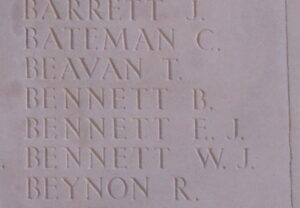
Daniel Bennett, Driver, T4/174036, Royal Army Service Corps. Daniel was the son of William and Mary Bennett, of Singleton House, Llanmorlais, Penclawdd. He worked as a miner prior to the war and had served in the Territorial army prior to enlisting at Seaforth on 6 March 1916 into the Army Service Corps. On 22 April 1916 he was posted to Egypt, joining the Horse Transport section of the 53rd (Welsh) Field Ambulance, and from March 1917 onwards took part in the divisions offensive into Palestine. The division took part in three large scale pitches battles, known successively as the First, Second and Third Battles of Gaza, before Jerusalem fell later in the year, and the offensive continued northwards, with the Turks in full retreat. Following a further advance in March 1918, General Allenby had turned his attention to the River Jordan, and the 53rd (Welsh) Division begun marching towards Tallat ed Duum, on the road to Jericho. The division relieved the 74th (Yeomanry) Division at Ramallah on 4 April 1918. Daniel was killed in action during the move forwards on 3 April 1918. The 32-year-old is buried in Jerusalem War Cemetery, Israel.
David Davies, Rifleman, R/3636, King’s Royal Rifle Corps. David was the son of Henry and Margaret Davies, of West End, Penclawdd. He worked as a collier prior to enlisting at Swansea on 7 September 1914 into the 9th Battalion, King’s Royal Rifle Corps. He joined the battalion at Winchester, where it was formed, before moving to Aldershot for training. David became ill whilst in training and was hospitalised at Connaught Military Hospital, Aldershot, where he died of pneumonia on 24 February 1915, aged 26. His body was brought home to Penclawdd where he was buried with full military honours in Parc Hendy Cemetery, Penclawdd.

Samuel Davies, Rifleman, A/3639, King’s Royal Rifle Corps. Samuel was the son of John Davies, of Band Row, Penclawdd. He was a farm worker at Heolas, Penclawdd, prior to enlisting at Swansea into the 10th Battalion, King’s Royal Rifle Corps. He was posted to France and joined the 12th Battalion, King’s Royal Rifle Corps, which landed in Boulogne on 22 July 1915 attached to 60 Brigade, 20th (Light) Division. On 26 July 1915 the Division moved to the Fleurbaix Sector for trench familiarisation and training. When the Battle of Loos was launched on 25 September 1915 the Division fought a diversionary attack towards Fromelles. Later that year it moved north, and fought at the Battle of Mount Sorrel alongside the Canadian Corps. It then fought through the Somme Offensive, at the Battles of Delville Wood, Guillemont, Flers-Courcelette, Morval and Le Transloy, and took part in the advance to the Hindenburg Line in March 1917. Later that year it moved north and relieved the 38th (Welsh) Division, before taking part in the Battle of Langemarck, advancing the line which had been gained by the Welsh. The division remained at Ypres for the coming weeks, taking part in the Battles of the Menin Road, and Polygon Wood. Samuel was killed in action while the Third Battle of Ypres continued to rage, on 21 September 1917. The 22-year-old has no known grave and is commemorated on the Tyne Cot Memorial, Belgium.
Thomas Eaton, Private, 64098, Welsh Regiment. Thomas was the son of Thomas and Jane Eaton, of Penclawdd. He worked as a stonemason at Dowlais prior to the war and lived with his wife Katherine Eaton (nee Edwards), at Gwersyllt, Caeracca, Dowlais. Thomas enlisted at Merthyr into the army and was posted to the 11th Battalion (Cardiff City), Welsh Regiment, which was in Salonika attached to 67 Brigade, 22nd Division. The division had been in Salonika since November 1915 and had taken part in several engagements and two major battles against the Bulgarians in the ensuing months. Their main action came on 18 September 1918 with the launching of the Third Battle of Doiran, with the Greeks and the British assaulting the positions of the Bulgarian First Army near Doiran Lake. The Bulgarians managed to beat off the attack, but the war was almost at an end, and they were soon to be forced into a withdrawal. Thomas was among hundreds of men killed during the battle, on 18 September 1918. The 38-year-old is buried in Doiran Military Cemetery, Greece. He is also commemorated on the Pant War Memorial, Merthyr.
William Fry, Private, 3145, Australian Infantry. William was the son of Richard and Elizabeth Fry, of Penlan, Penclawdd. He worked as a miner prior to migrating to Australia in the winter of 1913-1914, and enlisted at Sydney on 3 August 1915 into the 10th Reinforcements of the 1st Battalion, Australian Imperial Force. He embarked at Sydney, New South Wales, on board HMAT A69 Warilda on 8 October 1915 and upon arriving in Egypt joined the main AIF camp at Tel-el-Kebir. The AIF was doubled early in 1916 and on 13 February 1916 William was transferred to the newly formed 53rd Battalion, AIF. The battalion was made up of men from Sydney, a core of veterans from the 1st Battalion, with freshly arrived men making up the strength, and was attached to 14 Brigade, 5th Australian Division. The battalion arrived in France on 27 June 1916, entered the front line for the first time on 10 July, and became embroiled in its first major battle on the Western Front, at Fromelles, on 19 July 1916, a diversion intended to draw away German resources from the main battle to the south, on the Somme. The battle of Fromelles was a disaster. The 53rd Battalion was part of the initial assault and suffered grievously, incurring 625 casualties, including its commanding officer, amounting to over three-quarters of its attacking strength during the initial assault. Casualty rates among the rest of the 5th Division were similarly high. William was badly wounded on 19 July, suffering gunshot wounds to both legs. He was evacuated back to No 14 General Hospital at Wimereux, where he died of his wounds at 16.15 on 26 July 1916, aged 33. William is buried in Wimereux Communal Cemetery, France.
William Fry, Stoker 1st Class, SS/108286, Royal Navy. William was born on 16 March 1890, the son of John and Elizabeth Fry, of Colliery House, Penclawdd. He worked as a haulier prior to enlisting into the Royal Navy on 25 March 1909 and was posted to the Royal Naval base at Devonport. William served on several vessels prior to the war, and left the navy on 12 July 1914, becoming a member of the Royal Fleet Reserve. Following the outbreak of war, he re-joined his base at HMS Vivid, before being posted to Woolwich and taken aboard the destroyer HMS Meteor. Meteor served with the Harwich Force and on 17 October 1914 took part in the capture of the German hospital ship Ophelia, which was seized as a spy ship. On 23 January 1915, German battlecruisers under Admiral Franz von Hipper made a sortie to attack British fishing boats on the Dogger Bank, so the Admiralty despatched the Battlecruiser Force from Rosyth, commanded by Admiral Beatty, and the Harwich Force, commanded by Commodore Reginald Tyrwhitt, to intercept the German force. Meteor was one of seven M-class destroyers sailing with the Harwich Force. The forces met on the morning of 24 January, and the subsequent engagement became known as the Battle of Dogger Bank. On sighting the British, Hipper ordered his ships to head south-east to escape the British, who set off in pursuit. Being the fastest destroyers available to the British, the seven M-class were sent ahead to report the strength of the German forces and came under fire from the armoured cruiser Blücher. They withdrew to report the position of the Germans and then turned to take station ahead of the British line as Beatty’s battlecruisers came into gun range of the German ships. Blücher was badly damaged in the ensuing battle, but managed to aid the escape of the rest of Hipper’s fleet. Meteor led three other destroyers in a torpedo attack against Blücher but was hit by a shell in the forward boiler room which knocked her out of action, killing four and wounding two. Blücher was eventually overwhelmed by British shells and torpedoes, sinking at 12:10, while Meteor was towed back to the Humber by the destroyer Liberty. William was among the men killed by the explosion in the boiler room. The body of the 25-year-old was brought back from Grimsby, where Meteor had docked, home to Penclawdd and he was buried at St. Cynwyd’s Churchyard, Penclawdd with full military honours.
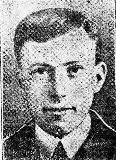
Howell Griffiths, Private, 35098, Welsh Regiment. Howell was born in Meidrim in 1888, the son of Henry and Margaret Griffiths. He worked at Gower prior to the war and married Charlotte Mary Hopkins in 1912. He enlisted at Swansea into the army, and was posted to the 13th Battalion, Welsh Regiment, which was attached to 114 Brigade, 38th Welsh Division. The Division had arrived in France in December 1915 and were posted to a peaceful sector near Fleurbaix to gain experience. In June 1916 the Division marched south to the Somme, where they successfully captured Mametz Wood between 7 and 11 July 1916. Howell was wounded at Mametz Wood, and was brought to Bristol Hospital, where he died of wounds on 25 July 1916, aged 27. He is buried in St. Cynwydd’s Churchyard, Penclawdd. Charlotte later remarried, and resided at White Walls, Dunvant, Swansea.
Israel Charles Griffiths, Lance Sergeant, 470774, London Regiment. Israel was born at 50, Benson Street, Penclawdd, the son of Israel and Mary Griffiths. The family had moved to West Ham by 1901 and lived at 38, Windsor Road, Wanstead, Essex by the outbreak of war. Israel worked as a clerk in the local YMCA prior to the war and on 10 September 1914 enlisted in London into the 12th Battalion, London Regiment (The Rangers), which was formed at 14, Chenies Street attached to 3rd London Brigade, 1st London Division. The battalion landed at Le Havre on 25 December 1914, joining 84 Brigade, 28th Division and saw heavy fighting at Ypres before transferring to 168 Brigade, 56th (London) Division. The division moved to the Somme in 1916 and took part in the diversionary attack on Gommecourt then fought later on in the offensive, at Ginchy, Flers and Morval, where they captured Combles. They wintered on the Somme, and followed the German retreat to the Hindenburg Line in March 1917 before fighting in the Battle of Arras. Israel joined the battalion at this time. After the closure of the Arras offensive the division moved to Ypres, where they fought at Langemarck, then at Cambrai during the Battle there in October 1917, remaining in the area for the winter. On 31 January 1918 the 12th London transferred to 175 Brigade, 58th (2/1st London) Division. In March 1918 the Division was positioned around St. Quentin, and faced the German Spring Offensive of 21 March here, fighting at the Battle of St Quentin, and retreated towards Villers Bretonneux. On 8 August 1918 the Allies pressed an attack towards Villers Bretonneux, known as the Black Day of the German Army, and later in the month the Division took part in the Battle of Albert, taking part in the 100 days offensive towards the Hindenburg Line. Israel was killed in action when his battalion was fighting near Longueval, beside the 38th (Welsh) Division, on 30 August 1918. The 27-year-old is buried in Delville Wood Cemetery, Longueval. His brother William had been killed in Palestine in 1917, but neither brother is commemorated at Penclawdd.
William James Griffiths, Serjeant, 550908, London Regiment. William was born at 50, Benson Street, Penclawdd, the son of Israel and Mary Griffiths. The family had moved to West Ham by 1901 and lived at 38, Windsor Road, Wanstead, Essex by the outbreak of war. William worked as a clerk prior to the war and enlisted in Westminster into the 2nd/16th Battalion, London Regiment (Queen’s Westminster Rifles). The battalion formed in London in September 1914, attached to 179 Brigade, 60th (2/2nd London) Division, and moved to Cork on security duties on 28 April 1916 following the Irish rebellion. On 14 May 1916 the division sailed from Rosslare to Fishguard and returned to Sutton Veny, landing at Le Havre on 22 June 1916. Their stay in France was over before it really begun, when in November 1916 the division moved to Salonika. On 2 July 1917 it found itself on the move again, when it embarked for Egypt to join the EEF, arriving at Alexandria on 5 July, and took part in Allenby’s offensive in Palestine. The division saw its first major action during the Third Battle of Gaza, which was launched on 31 October 1917. Following a successful attack, on 6 November the EEF attacked north of Beersheba, capturing Gaza. William was killed in action during the advance on Gaza on 6 November 1917. The 23-year-old is buried in Gaza War Cemetery. His brother, aptly named Israel, was killed the following year, yet neither are commemorated on the Penclawdd War Memorial.
Thomas John Howells, Private, 88942, Royal Army Medical Corps. Thomas was the son of John and Mary Jane Howells, of Penclawdd. He worked as a miner prior to marrying Jane Morgans, of 2, Glanmor Terrace, Penclawdd in 1910. Thomas enlisted at Swansea into the Royal Army Medical Corps following the outbreak of war and was posted to East Africa to join the 300th Nigerian Field Ambulance, RAMC. Very little is known of his time at war, but he died at the 84th General Hospital, Dar Es Salaam on 5 December 1918, aged 30, and is buried in Dar Es Salaam (Upanga Road) Cemetery, Tanzania.
David George Hughes, Rifleman, R/9145, King’s Royal Rifle Corps. David was the son of Edwin and Ann Hughes, of Barracks Row, Penclawdd. He worked as a collier prior to enlisting in Swansea into the King’s Royal Rifle Corps. He embarked for France on 31 July 1915, and was posted to the 2nd Battalion, King’s Royal Rifle Corps, which was attached to 2 Brigade, 1st Division. David joined the battalion in time to take part in the Battle of Loos, which was launched on 25 September 1915. The division suffered heavy casualties at Loos and in 1916 moved southwards in order to take part in the Somme offensive, seeing heavy fighting during the Battle of Pozieres. By 6 September the battalion was badly depleted, and received a draft of 220 other ranks and an officer as reinforcements. The 2nd KRRC began to move back towards the front line on the following day, marching through the devastated Mametz Wood before going into support of the divisional troops holding the front line. During the morning of 9 September 1916 orders were received that the battalion would attack at 16.45, so the men were moved forwards to Seaforth Trench and Rifle Trench. The battalion had already suffered a number of casualties before zero hour, when their artillery support opened fire onto the German lines, and the battalion captured its objectives on the left, but on the right were held up by heavy machine-gun fire. Stokes mortars and Lewis guns were brought forward to dampen the enemy’s resistance and the objectives were fully captured by nightfall. The battalion held onto its new line throughout the night, suffering incessant artillery fire. At some time during the attack David was reported as missing in action. He was later declared as having been killed in action that day. The 24-year-old has no known grave and is commemorated on the Thiepval Memorial, France.
Arthur James Humphreys, Private, 116427, Machine Gun Corps. Arthur was the son of John and Catherine Ann Humphreys, of Benson Terrace Penclawdd. He enlisted at Gowerton into the army and at some time was posted to France, joining the 141st Company, Machine Gun Corps, which had been formed in the 47th Division on 12 December 1915. The division was north of Arras when the Germans attacked Vimy Ridge early in 1916, and then moved south to the Somme, where it fought at the Battle of Flers-Courcelette, and then at the Battle of Le Transloy, where the Division captured Eaucourt l’Abbe, and took part in Attacks on the Butte de Warlencourt. The Battle of the Somme had almost closed down when Arthur was badly wounded while fighting east of the Butte, and he died of his wounds on 2 December 1917, aged 20. Arthur is buried in Grevillers British Cemetery, Bapaume, France.
David John Jones, Private, 8107, Welsh Regiment. David was the son of Daniel and Elizabeth Jones, of Walters Terrace, Gowerton. He had originally enlisted into the 2nd Battalion, Welsh Regiment at the outbreak of war, and embarked for France with the battalion on 13 August 1914. He would have taken part in the retreat from Mons to the Marne, and in the subsequent Battles of the Marne and the Aisne, before the battalion moved to guard Ypres, as part of 3 Brigade, 1st Division. He was wounded at some time afterwards, probably at Gheluveldt, and upon returning to duty was posted to the 1st Welsh, which had arrived at the front in January 1915. David was wounded for the second time while serving with the 1st Welsh, and upon recovery was posted back to the 2nd Welsh, but was wounded for the third time. Upon recovering from his latest wound, he was posted to the 9th Battalion, Welsh Regiment, which was attached to 58 Brigade, 19th (Western) Division. The division had suffered heavy casualties at Loos on 25 September 1915, and in June 1916 moved south to the Somme sector in order to take part in the Somme offensive, which was launched on 1 July 1916. David was killed in action whilst the 9th Welsh was moving to its assembly trenches that day, prior to their assault on the coming morning. He was originally buried on the battlefield, where he fell, but during the post-war battlefield clearances his grave was discovered, and the body of the 32-year-old was re-interred in Cerisy-Gailly French National Cemetery, France.
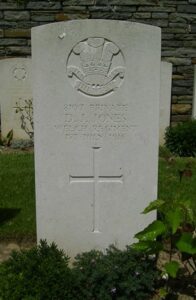
David Lewis Jones, Private, DM2/164382, Royal Army Service Corps. David was the son of David Lewis Jones and Elizabeth Ann Jones, of Sea View, Penclawdd. His father was a Policeman and by 1911 the family had moved to 12, Llanwonno Road, Pontygwaith following his promotion to Sergeant. David worked as a haulier prior to the war and enlisted at Porth into the Army Service Corps as a driver. David served in France for two years, and during the last weeks of the war returned home on two weeks leave on 30 October 1918. Within less than a week, on 5 November 1918, David had fallen ill and succumbed to pneumonia at Cornelly. The 26-year-old was buried with full military honours in Barry (Merthyr Dyfan) Burial Ground. He is not commemorated on the Penclawdd War Memorial.
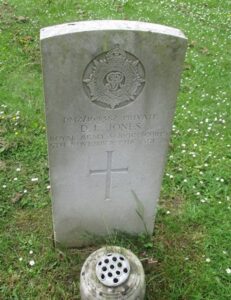
Thomas Arthur Lewis, Guardsman, 2051, Welsh Guards. Thomas was born in Barry, the son of Thomas and Eleanor Lewis. By 1911 the family was living at The George, Penclawdd, and Thomas had found work as a collier. He enlisted at Swansea in 1915 into the Welsh Guards, which had been raised by Royal Warrant of 26 February 1915, at White City, before landing at Le Havre on 18 August 1915, becoming attached to 3rd Guards Brigade, Guards Division. The Division saw its first major action during the Battle of Loos on 25 September 1915, remaining in the area during the coming months, where it also fought in the subsequent Action of Hohenzollern Redoubt. In July 1916 the Division moved to the Somme, where it fought at the Battle of Flers-Courcelette. On 9 September 1916 the Welsh Guards marched to Carnoy, having received orders to take over the front line during that night, and arrived at Ginchy after dark. The situation was confused, as it was found difficult to make contact with the troops on their flanks, and patrols sent out could only make contact with German troops. By dawn on 10 September the situation was still confused, and a patrol had only just made contact with an isolated party of troops when the Germans launched a counter-attack against them. Heavy fighting ensued throughout the day, and it was only the arrival of 100 Scots Guards carrying boxes of grenades that prevented an enemy break-through. The Welsh Guards suffered 205 casualties during the days fighting, including Thomas, who was listed as killed in action during the day, 10 September 1916. The 19-year-old is buried in Delville Wood Cemetery, Longueval, France.
William Joseph Lewis, Corporal, 113043, Royal Engineers. William was the son of John and Mary Lewis, of Gwernffrwd, Penclawdd. After leaving Gowerton School he was educated at the University of Wales, Cardiff before gaining a post with the National Health Insurance at Cardiff in 1913. He enlisted into the Public Schools Battalion of the Royal Fusiliers in September 1914, but due to his knowledge in chemicals was transferred to the Royal Engineers in August 1914, joining the Special Brigade, which was the gas warfare arm of the corps. He was drafted to France on 23 August 1915, joining ‘M’ Special Company, Royal Engineers. By the summer of 1916 William was on the Somme with his unit, based in the northern sector of the battlefield. On 14 July 1916 his company was at work when it came under a heavy German artillery bombardment. William was reported to have bravely stuck to his post during the bombardment, which ultimately killed him. The 27-year-old is buried in Bienvillers Military Cemetery, France, in grave XV. A. 7.
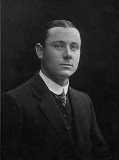
William James Morris, Private, 22789, Welsh Regiment. William was the son of John and Catherine Morris, of Llanmorlais, near Penclawdd. He was well known at Penclawdd, having worked as a servant there prior to the war and enlisted with his best friend, Trevor Rees, of Penclawdd, into the Welsh Regiment in December 1914. The men were posted to France on 16 March 1915 joining the 1st Battalion, Welsh Regiment, which was attached to 87 Brigade, 28th Division, and had recently moved to France from India. The battalion had just moved into the Dranoutre sector, near Ypres, and had recently suffered heavily while holding the line at Zillebeke in the Hill 60 sector. Its time in the new sector was more peaceful, but the battalion suffered ‘trench wastage’, casualties on a daily basis. On 5 April the 1st Welsh were moved back to Ypres, and among its first casualties back there was William, who was killed in action on 11 April 1915, aged 19, less than a month after arriving on the Western Front. William has no known grave and is commemorated on the Ypres (Menin Gate) Memorial, Belgium. He is not commemorated at Penclawdd, but on the Swansea Cenotaph.

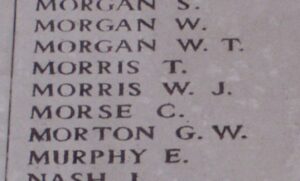
Ernest Edmond George Prickett, Private, 2299, Monmouthshire Regiment. Ernest was the son of Sidney James And Annie Prickett, of 25, The Avenue, Bulwark, Chepstow. He came to Penclawdd to work as a gardener, for Mr D. J. Hughes, of Burry House, in 1911, and became a member of the Penclawdd Sunday School and a regular attendant at Penclawdd Church. He returned home to Chepstow at the outbreak of war to enlist into the 1st Battalion, Monmouthshire Regiment, which was a Territorial unit attached to the Welsh Border Brigade in the Welsh Division. On 13 February 1915 the 1st Mons left the Division and landed in France, joining 84 Brigade, 28th Division and joined the division in the Zillebeke and Hill 60 sector. Within weeks of arriving at the front, Ernest impressed his company commander, Captain Charles Evill, enough that the officer felt compelled to write to his mother: ‘I am very pleased to write and tell you that your son, who is in my company, has done very well, and on Friday last (March 12th) he performed a very good piece of work in carrying ammunition across an open space under heavy fire to his trench, where they were getting short. He volunteered to do this and did it very well indeed…’ The division saw heavy fighting during its time in the Hill 60 sector, but things were about to get much worse for them, especially for the three battalion of the Monmouthshire Regiment who were by now in the same area. April 1915 saw the launching of several large scale offensives at Ypres, which became known as the Second Battle of Ypres, and also saw the first use of poison gas, by the Germans, during the war. After weeks of fighting, by the first week of May the front line had changed. The 28th Division now held the sector running from half-a-mile short of the Ypres-Roulers road to Mouse Trap Farm. The 1st Monmouths and 1st Welsh were on the left of the divisional line when, on 8 May 1915, after several torrid days in the line, the Germans launched another a heavy artillery bombardment onto the 28th Division before waves of German infantry attacked at 08.30. The entire division suffered terrible casualties as wave after wave of attacks came in, and the 1st Monmouths were almost annihilated. Ernest was among many men killed that day, on 8 May 1915. The 20-year-old has no known grave and is commemorated on the Ypres (Menin Gate) Memorial, Belgium. Ernest is not commemorated on the Penclawdd War Memorial.
William Prickett, 1917. The war memorial at Penclawdd includes the name of William Prickett, who died in 1917. Two men of that name were killed that year, both on the Western Front, but neither have any links with Penclawdd, one being from Lancaster, living in the city when he enlisted, and the other was from the village of Butlers Marston, in Warwickshire, who gave his address as Butlers Marston when he enlisted. Is the name on the memorial an error, and should be of Edward Prickett, above?
David John Rees, Able Seaman, Wales/Z/1936, Royal Naval Volunteer Reserve. David was born on 2 July 1897, the son of Henry and Mary Jane Rees, of Hall, Penclawdd. He had enlisted into the Royal Naval Volunteer Reserve early in the war and after training was posted aboard the battlecruiser HMS Queen Mary. She was completed in 1913 and saw her first action during the Battle of Heligoland Bight as part of the Grand Fleet in 1914. As part of the 1st Battlecruiser Squadron, she attempted to intercept a German force that bombarded the North Sea coast of England in December 1914, but was unsuccessful. She was refitting in early 1915 and missed the Battle of Dogger Bank in January, but participated in the largest fleet action of the war, the Battle of Jutland on 31 May 1916. The battle came about following the intelligence received by the Royal Navy that the German High Seas Fleet was steaming out into the North Sea, and as a result The Grand Fleet and The Battlecruiser Fleet were sent out to intercept them. At 15.50 the Queen Mary opened fire on the SS Seydlitz, setting one of her gun turrets ablaze. As the battle raged on, Queen Mary received two hits in reply from Seydlitz, but then came under fire from the German battleship HMS Derfflinger, and at 16.26 was torn apart after a direct hit from the German ship struck her magazine, causing a cataclysmic explosion. The sinking of Queen Mary cost the lives of 1,266 men, with only 18 survivors. David was among those killed on 31 May 1916. He was 19 years old and is commemorated on the Plymouth Naval Memorial, Devon.

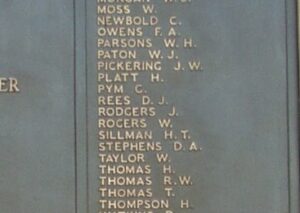
Glyn Rees, Private, 266356, Welsh Regiment. Glyn was the son of Henry and Mary Rees, of Penclawdd. He worked as a collier when he married Gertrude Dallimore in 1911 and the couple lived at the Barracks, Penclawdd. Glyn enlisted at Swansea into the 1st/6th Battalion, Welsh Regiment, which was the first Territorial unit to land on the Western Front, landing in August 1914. Initially, in late 1914 and early 1915, they were on lines of communication and in July 1915 were based in the Locre and Kemmel area, facing the Germans who were on the high ground at Spanbroekmolen. The battalion was in the trenches, but also doing work repairing trenches etc. On 5 July 1915 the battalion was attached to 84 Brigade, 28th Division, and took part in the Battle of Loos. On 23 October 1915 the battalion was transferred to 3 Brigade, 1st Division, becoming the Divisional Pioneer Battalion on 15 May 1916, before moving to the Somme and saw much action during its time there. The division remained there for the winter, and in March 1917 took part in the advance caused by the German Retreat to the Hindenburg Line. Later that year it moved north to Ypres, where they fought at the Battle of Pilckem Ridge, and then at the Battle of the Menin Road, Battle of Poelcapelle and the First Battle of Passchendaele. Following the closure of the Passchendaele offensive, the 6th Welsh continued work throughout November, in the sector north-east of Ypres. Glyn became one of several men wounded during the incessant shellfire the battalion suffered during the month, and died of his wounds at Proven on 30 November 1917, aged 26. He is buried in Mendinghem Military Cemetery, Belgium.
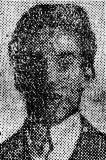
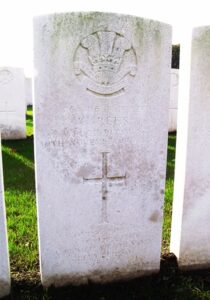
Griffith Henry Rees, Private, 3094, Welsh Regiment. Griffith was the son of Evan George and Ann Rees, of 6, Station Road, Penclawdd. He worked at Berthllwyd Colliery prior to enlisting in Swansea into the 1st/6th Battalion, Welsh Regiment, which was the first Territorial unit to land on the Western Front, landing in August 1914. Initially, in late 1914 and early 1915, they were on lines of communication and in July 1915 were based in the Locre and Kemmel area, facing the Germans who were on the high ground at Spanbroekmolen. The battalion was in the trenches, but also doing work repairing trenches etc. On 5 July 1915 the battalion was attached to 84 Brigade, 28th Division, and took part in the Battle of Loos. On 23 October 1915 the battalion was transferred to 3 Brigade, 1st Division, becoming the Divisional Pioneer Battalion on 15 May 1916. Just prior to this, the division was still at Loos, and the 6th Welsh had already gained a reputation as a hard-working unit whilst sending detachments of men to assist Royal Engineer units repairing defensive systems around the village of Loos. Griffith was wounded around this time, and died of his wounds in hospital at Bethune on 28 April 1916. The 18-year-old was buried in Bethune Town Cemetery, France.
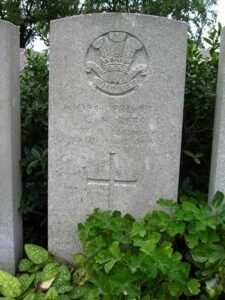
Gwyn Rees, Private, 2644, Yorkshire Regiment. Gwyn was the son of David Rhydian Rees and Margaret Anne Rees, of the Emporium, Penclawdd. He worked as a Draper prior to enlisting in Swansea into the 6th Battalion, Welsh Regiment, and after embarking for France was transferred to the 4th Battalion, Yorkshire Regiment, which was known as the Green Howards, and was attached to 150 Brigade, 50th (Northumbrian) Division. During the summer of 1916 the Division was on the Somme, where it fought at the Battle of Flers-Courcelette, the Battle of Morval and the Battle of Le Transloy. After spending a winter on the Somme, tit moved north to Arras, where they took part in the Arras Offensive of April 1917, capturing the Wancourt Ridge. The division then fought at the Second Battle of the Scarpe, before being sent north again to Ypres and fought at the Second Battle of Passchendaele. After wintering in the Ypres Salient the division moved south and was hit by the German Spring Offensive of 21 March 1918, during the Battle of St Quentin, suffering heavy casualties in their retreat back across the Somme. The battered division moved north to Flanders to rest and rebuild, but in April the Germans launched an attack in Flanders, around the Lys, and the Division again suffered terribly, before being withdrawn and sent to IX Corps, then on the Aisne, believed to be a much quieter area. This was unfortunately not the case, as the Division was hit hard by a surprise enemy attack on 27 May 1918. The attack was heralded by a massive artillery bombardment along the entire Aisne front, which was followed up by waves of German infantry. The 50th Division was battered and forced to retire behind the River Aisne, where the following day the Germans attacked again. Gwyn was killed in action here on 28 May 1918, as the remnants of the division was retreating alongside the French to Fismes. The 29-year-old is buried in Craonnelle French National Cemetery, France.

Henry Rees. Henry is named on the memorial which shows he died in 1915. There is no man of that name who died that year who has any obvious ties with Penclawdd.
Richard Southern, Corporal, A/3329, King’s Royal Rifle Corps. Richard was the son of John and Emma Southern, of Irons Cross Salford Priors, Warwickshire. He worked at Berthlwyd Colliery, Penclawdd prior to enlisting at Swansea on 7 September 1914 into the 7th Battalion, King’s Royal Rifle Corps. By 29 October 1914 Richard had been promoted to Corporal and posted to the 10th Battalion, King’s Royal Rifle Corps, which was attached to 59 Brigade, 20th (Light) Division. The battalion landed in Boulogne on 21 July 1915, and the division moved to the Laventie sector for trench initiation. On 29 April the battalion moved into the line at Tilleloy for a short tour of duty. The battalion began work on a ditch in front of their parapet over the coming days, working in relative peace, but suffering one man killed on the 30th, another on the 31st and another on 2 September. For the next two days the battalion war diary simply stated nothing to report, and then on 4 September 1915 a brief entry stated ‘Corporal Southern killed. Enemy very quiet. There appear to be very few Germans in their front line.’ Richard is officially recorded as having been killed in action on 5 September 1915, at odds with the war diary report. The 22-year-old is buried in Royal Irish Rifles Graveyard, Laventie, France.

William Thomas, Serjeant, 13289, South Wales Borderers. William was born in Barmouth and had served with the Royal Welsh Fusiliers during the Boer War. By the time the Great War began, he lived with his wife, Sarah Ann Thomas, at Burry Cottages, Penclawdd. He re-enlisted at Tonyrefail into the 4th Battalion, South Wales Borderers, which was attached to 40 Brigade, 13th (Western) Division. In July 1915 the 13th Division was sent to the Mediterranean to join the Gallipoli campaign and landed at Cape Helles. Two weeks later the division was moved to the ANZAC sector to take part in an assault on the Sari Bair ridge. At 08.00 on 6 August the offensive began and the 4th Battalion led the way forward, reaching the summit of Achyl Dere before attaining its objective, the ridge named Damakjelic Bair. On 9 August 1915 the Turks counter-attacked, and among the first to fall was Lieutenant Colonel Gillespie, the CO of the 4th SWB. William was also killed in action during the days fighting. He has no known grave and is commemorated on the Helles Memorial, Gallipoli.

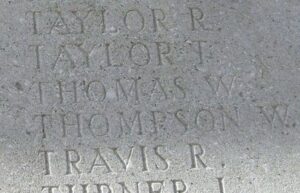
William John Thomas, Private, 12691, Royal Welsh Fusiliers. William was born in Victoria Houses, Penclawdd, the son of John and Ann Thomas. The family later lived in Ammanford. William was living in Shotton, Flintshire with his wife Maggie when he enlisted at Shotton into the 8th Battalion, Royal Welsh Fusiliers, who were attached to 40 Brigade, 13th (Western) Division. On 13 June 1915 the first transports carrying the Division left port, and moved to Alexandria, and between 6 and 16 July 1915 landed on Cape Helles and relieved the 29th Division. They left and returned to Mudros at the end of the month, and the entire Division landed at ANZAC Cove between 3 and 5 August 1915, taking part in the Battles of Sari Bair, Russell’s Top, and Hill 60, ANZAC. Soon afterwards the Division was transferred from ANZAC to Suvla Bay, and it was evacuated from Suvla on the 19th December 1915, whereupon the infantry moved after a week’s rest to the Helles bridgehead, where they faced the last Turkish attacks at Helles. On 8 January 1916, the Division was evacuated from Helles, and by 31 January was concentrated at Port Said, where they held forward posts in the Suez Canal defences. On 12 February 1916 the Division began to move to Mesopotamia, to strengthen the force being assembled for the relief of the besieged garrison at Kut al Amara. By 27 March, the Division had assembled near Sheikh Saad and came under orders of the Tigris Corps, and then took part in the attempts to relieve Kut. However, after these efforts failed and Kut fell, the British force in the theatre was built up and reorganised. William died of sickness about this time, on 11 July 1916. He was 33 years old, and is buried at Amara War Cemetery, Iraq. William is commemorated at Ammanford, Connah’s Quay and Shotton, but not in his native Penclawdd. Maggie later moved back to 32, New Road, Ammanford.
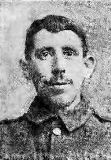
George Tucker, Able Seaman, Wales/Z/3713, Royal Naval Volunteer Reserve. George was born on 23 August 1897, the son of Charles and Martha Tucker, of Rock House, Llanrhidian. He enlisted into the Royal Naval Volunteer Reserve after the outbreak of war and after training was posted aboard the Irish steamer SS Inniscarra. On 12 May 1918 Inniscara was on route from Fishguard for Cork, carrying a general cargo, when she was torpedoed and sunk by the German submarine U-86, ten miles off Ballycottin Island, with the loss of 28 lives. Only five men survived, including the captain, chief engineer and three seamen, who had managed to get into a lifeboat, and were landed at Cork safely that evening to tell their stories. A newspaper report of the sinking stated that: ’The captain, injured, was at the bottom of the boat. When the submarine came alongside asking for the captain, Seaman Bird replied that he was probably drowned. Bird was then taken on the submarine, and questioned as to the name of the ship, her destination and cargo, and, when done with was flung back into the boat. A second survivor was then taken on the submarine, and was given, some letters with the instruction Post them to Lloyd George when you get ashore.’ They also told of the bravery of George Tucker, who was last seen trying to load a shell into the ships only gun, but went down with the ship before he could bring it to bear on the submarine. The 20-year-old has no known grave and is commemorated on the Plymouth Naval Memorial, Devon. George is not commemorated at Penclawdd, but on the Swansea Cenotaph.
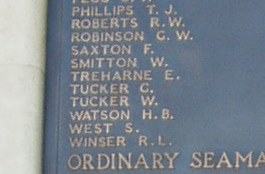
Frederick George Wilkinson, Driver, 840933, Royal Field Artillery. Frederick was born in Bradford in 1893. Prior to the war he was living in Penclawdd and in 1915 married Beatrice Jenkins, a domestic servant from Penclawdd. The couples only child, Frederick John Wilkinson, was born in the village on 18 June 1916. Frederick enlisted in Swansea into the Royal Field Artillery as a driver, and was posted to France at some time afterwards, joining D Battery, 307th Brigade, Royal Field Artillery at Ypres. Frederick was killed in action at Ypres on 6 August 1917, aged 24. His battery would have been supporting the ongoing offensive of the Third Battle of Passchendaele. He is buried in Klein-Vierstraat British Cemetery, Belgium.
Samuel George Williams, Private, 368216, Royal Army Medical Corps. Samuel was the son of Robert and Elizabeth Williams, of Glebe Farm, Cheriton, Reynoldston. He lived with his wife Sarah Jane Williams at Bysouth, Penrice, Reynoldston prior to enlisting at Swansea into the Royal Army Medical Corps and was posted to France, joining the 137th Field Ambulance, Royal Army Medical Corps, which was attached to the 40th (Bantam) Division. The Division moved to France during the first week of June, 1916, and moved to the front near Loos. Late in 1916 it moved south to the Somme, and fought at the Battle of the Ancre, and remained in the area over the winter. In March 1917 the Germans withdrew to their shortened line, called the Hindenburg Line, and the 40th Division was one of the Divisions that followed the withdrawal. Later in the year it took part in the Battle of Cambrai, playing an important role in the attack on Bourlon Wood. The division remained in the area over the coming months, enjoying relative peace over the coming months. Samuel was killed during this quieter time, on 28 January 1918, aged 25. He is buried in Mory Abbey Military Cemetery, Mory, France.
World War Two, 1939-1945
Leonard Beale, Private, 14238245, Welch Regiment. Leonard was the son of Albert Beale and Margaret Ann Beale (nee Coppin), of Penclawdd. He served with the 4th Battalion, Welch Regiment, which was the Carmarthenshire Territorial battalion, and was attached to the 53rd (Welsh) Division. The division spent the early part of the war in Northern Ireland, before moving to Southern England to prepare for the invasion of Europe. At the end of June, 1944, the division crossed to Normandy, the 4th Welch landing on 21 June, and took part in the break-out from the Normandy beach-head. Following the break-out the division took part in the Allied advance through northern France into Holland, and fought its way towards the German frontier and the Rhine crossings, taking part in a famous action at s’Hertogenbosh. On 7 January 1945 the 4th Welch was ordered to attack on to the high ground South-West of Waharday, followed on the right by an attack by the East Lancashire’s on Grimbiemont, supported by tanks of the 144th RAC. The objectives were captured successfully but at a heavy cost by 11.20. Leonard was killed in the assault that day, on 7 January 1945. The 21-year-old is buried in Hotton War Cemetery, Belgium.
Cyril Davies, Sergeant, 1412831, Royal Air Force Volunteer Reserve. Cyril was the son of Daniel and Sarah Ann Davies, of Penclawdd. He served as an air gunner with 51 Squadron, Royal Air Force, which flew the Handley Page Halifax bomber, and were based at RAF Snaith, in Yorkshire. On 25 February 1943, Cyril and his crew had a lucky escape when their Halifax, Serial W7855, crash landed at Snaith and was badly damaged. All of the crew managed to escape injury, and on the night of 3 March 1943 took off from Snaith aboard Halifax W7861, which had been despatched to bomb Hamburg with No. 4 Group. The bomber failed to return the following morning, and following a court of enquiry, Cyril and his crew were posted as missing believed killed in action, on 3 March 1943. Cyril was 22 years old and is commemorated on the Runnymede Memorial, Surrey.
David Garfield Davies, Staff Sergeant, 7400698, Army Air Corps. David was the son of Daniel and Ruth Davies, of Penclawdd. He served with the No. 4 Flight, B Squadron of the Glider Pilot Regiment. David’s squadron was part of the massive force which had been rapidly assembled in order to take part in Montgomery’s plan to cross the Rhine and end the war before Christmas, which was code-named Operation Market Garden. Garden was the ground operation which required XXX Corps to advance up a single road towards Arnhem to relieve the airborne element, codenamed Market, whose task was to capture the Rhine crossing at Arnhem. American paratroopers of the 101st and 82nd Airborne were allotted bridges along the route XXX Corps were to take. The airborne element was launched on 17 September 1944, when the first lift took off and dropped their troops on the LZ, some distance outside Arnhem. The paratroopers soon found that the distance from the LZ to the bridge was too much to utilise the element of surprise, but a small force under Major John Frost reached the bridge, but were unable to capture both ends. Meanwhile David, who had been a crewmember of a Horsa Glider which had brought troops over, had taken up his secondary role, as a soldier, and was part of a group of men caught up in heavy fighting against well trained, armoured German troops. David was part of a group of men who were last seen alive pinned down in a slit trench and being assaulted by enemy tanks on 25 September 1944. The 25-year-old was later declared to have been killed on that day. He has no known grave, although at least two graves to Unknown Staff-Sergeants of the Glider Pilot Regiment are known to exist at Arnhem, and as a result he is commemorated on the Groesbeek Memorial, Netherlands. David is also commemorated on the Gowerton County School Memorial.
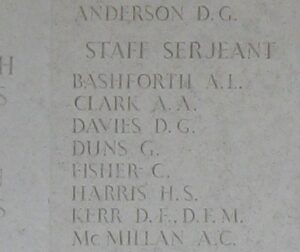
Eufryn Davies, Private, 3972836, Durham Light Infantry. Eufryn was the son of Evan and Susie Davies, of 2, Blue Anchor, Penclawdd. He served with the 16th Battalion, Durham Light Infantry, which was sent to North Africa in 1942, and took part in the campaign which drove the Afrika Korps out of Tunisia. Eufryn was probably among a number of reinforcements from the Welch Regiment which joined the battalion during this time. The battalion then took part in the Italian campaign, which began with the invasion of Sicily in July 1943, and on 9 September 1943 the battalion landed on the Italian mainland. On the following day the battalion marched through Salerno, and came into contact with the Germans near Parato. A German counter-attack was broken up on 15 September, before the 16th Durham’s went back into a rest area at S. Leonardo. Their next battle was at the Vietri Defile, which began on 23 September and saw the battalion in action against German armoured troops. Eurfryn was killed during this action, on 24 September 1943. He was 32 years old and is buried in Salerno War Cemetery, Italy.
Gwilym Powell Davies, Able Seaman, D/JX175328, Royal Navy. Gwilym was born at Penclawdd on 26 March 1918, the son of James and Mary Jane Davies. He was the husband of Sarah Anne Davies, of Crofty. Gwilym enlisted into the Royal Navy and was posted to the shore establishment HMS Drake. He became ill and died of cardiac failure and acute asthma at Wembury, Plymouth, on 28 July 1942, aged 24. His body was brought home for burial in Crofty (Hermon) Baptist Chapel Burial Ground. Gwilym is also commemorated on the Gowerton County School Memorial.
John Henry Evans, Aircraftman 1st Class, 913239, Royal Air Force Volunteer Reserve. John was the son of Mr. and Mrs. E. Evans, of Penclawdd. He enlisted into the Royal Air Force Volunteer Reserve and embarked for Malaya at some time prior to the Japanese invasion of the Malayan Peninsula, which took place from Indochina, their troops moving into northern Malaya and Thailand by amphibious assault on 8 December 1941. The attack took place almost at the same time the Japanese attacked Pearl Harbour and brought the USA into the war. On 8 February 1942 the Japanese began their attacks on the British held garrison of Singapore. By the time the Singapore Garrison was surrendered on 15 February 1942, over 5,000 Allied troops had been killed or wounded. Over 85, 000 Allied prisoners were marched into captivity. John had been killed on 14 February 1942, the day before the surrender. The 24-year-old has no known grave and is commemorated on the Singapore Memorial, Kranji.
Gwilym Penry Guy, Pilot officer (Pilot), 172461, Royal Air Force Volunteer Reserve. Gwilym was the son of Enos and Elizabeth Guy (nee Francis), of Penclawdd. He served as a Pilot with 57 Squadron, Royal Air Force, which was a heavy bomber squadron equipped with the Avro Lancaster, and was based at RAF East Kirkby. On the night of 21/22 June 1944, Gwilym took off from East Kirkby flying Lancaster III, Serial LM580, as part of a large force of aircraft sent to bomb a petrol refinery at Wesseling, Germany. In the early hours of 22 June 1944 Gwilym’s aircraft was flying over Belgium when it was hit by flak and began to lose height. He remained at the controls of the stricken Lancaster while his crew baled out, but was killed when his aircraft plummeted into the ground near As-en-Campine, some 5 miles from Genk, in Belgium. Gwilym was 22-years-old when he was killed that day, and is buried in As Communal Cemetery, Belgium. He is also commemorated on the Gowerton County School Memorial.
Melvyn D. Harry, Private, Welch Regiment. Melvyn was born in Penclawdd in 1924. He had served during the war with the Welch Regiment, and died after discharge, on 2 October 1946, aged 22. He is buried in Parc Hendy Cemetery, Penclawdd. Melvyn is not commemorated by the CWGC. He is commemorated on the Gowerton County School Memorial, but not on the Penclawdd Memorial.
Glyndwr Howell, Gunner, 1747634, Royal Artillery. Glyndwr was the son of Henry and Ann Howell, of Royal Oak, Penclawdd. He served with the 56th Heavy Anti-Aircraft Regiment, Royal Artillery. The regiment provided air defence for the city of Plymouth and the Royal Navy Dockyard during The Blitz. I was sent to Iceland in July 1941, but following the transfer of Iceland to the USA, the regiment was posted to the Far East, sailing for India in December 1941 and sending batteries to Madras and Calcutta. Glyndwr died in Gauhati on 2 February 1943. He was 35 years old and is buried in Gauhati War Cemetery, India.
John William Howell, Able Seaman, D/JX 165301, Royal Navy. John was the son of William James Howell and Elizabeth Howell, of Penclawdd. He served with the Royal Navy aboard the light cruiser, HMS Gloucester. In August 1939, Gloucester was assigned to the China Station, but was then transferred to the Indian Ocean and later to South Africa. She was transferred to the Mediterranean Fleet for convoy duties in 1940. On 22 May 1941 Gloucester was attached to Force C, which was attempting to prevent the Germans from re-enforcing Crete following the German paratrooper invasion of the island, when she was attacked by German dive-bombers, and sank with the loss of 722 lives. John was among the dead. He was 32 years old and is commemorated on the Plymouth Naval Memorial, Devon.
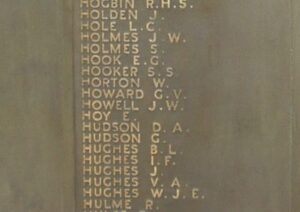
Harold Hughes, Private, 14594367, Wiltshire Regiment. Harold was the son of Daniel and Mary Jane Hughes, and the husband of Lily Hughes, of Penclawdd. He served with the 5th Battalion, Wiltshire Regiment. The battalion landed on the Normandy beaches on 24 June 1944, and on the following day were sent straight into the battle of the Odon. After a brief respite from 2 July to 4 July the battalion was sent into action again, during the Battle for Caen. Harold was killed during the opening day of Operation Jupiter, the assault on Hill 112, which was held by the 10th SS Panzer Division, on 10 July 1944. He was 33 years old and is commemorated on the Bayeux Memorial, Calvados, France.
John Gwynfor Hughes, Gunner, 1083418, Royal Artillery. John was the son of Edward and Ann Hughes, of Penclawdd and the husband of Winnifred Nellie Hughes, of Three Crosses, Glamorgan. He served with the 97th (The Kent Yeomanry) Field Regiment, Royal Artillery. The regiment joined the BEF in May 1940, and was evacuated from Dunkirk during Operation Dynamo. It arrived in Iraq on 20 October 1941, but was then split, with the bulk of the regiment being transferred to Egypt on 31 May 1942. Joining the 7th Armoured Division. John served with the regiment during the Second Battle of El Alamein, but was killed just after, on 14 November 1942, aged 31. John has no known grave so is commemorated on the Alamein Memorial, Tunisia.
Alfryn James Jenkins, Pilot officer (Pilot), 161735, Royal Air Force Volunteer Reserve. Alfryn was the son of William and Mary Ann Jenkins, of Penclawdd, and the husband of Mary Gwendoline Jenkins, of Penclawdd. He served as a police officer at Peterborough prior to the war, and enlisting into the Royal Air Force Volunteer Reserve. He served with 100 Squadron, Royal Air Force, which was a heavy bomber squadron, equipped with the Avro Lancaster and based at RAF Grimsby. Alfryn was possibly a prisoner of war who died in Germany on 24 March 1944, aged 31. He is buried in Berlin 1939-1945 War Cemetery, Germany.
William Arthur Henry Lewis, Ordinary Seaman, D/JX 223629, Royal Navy. William was the son of Richard Russell Lewis and Margaret Anne Lewis, of Penclawdd. He served with the Royal Navy aboard the destroyer HMS Chelsea. Chelsea was a former US destroyer which had been one of a number of destroyers transferred to the Royal Navy in 1940 in the land bases for destroyer’s exchange. Chelsea reached Devonport on 28 September 1940 and was attached to the Western Approaches Command at Liverpool for Atlantic convoy duty. William was posted as missing presumed killed on 6 March 1941, presumably whilst Chelsea was on convoy duties. The 20-year-old has no known grave and is commemorated on the Plymouth Naval Memorial, Devon
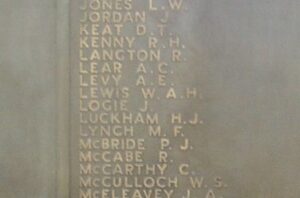
William Gordon Meredith, Private, 14403218, Welch Regiment. William was born on 30 October 1924, the son of Edgar Granville Meredith and Elizabeth Meredith (nee Rees), of Penclawdd. His father died in 1941, possibly during a bombing raid on Swansea, and Elizabeth remarried William James Howells, of Penclawdd. William originally served with the Welch Regiment, but was among a number of men from the regiment to volunteer for commando training, and after passing the commando course at Achnacarry was posted to No 4 Commando. The Commando landed under heavy fire at Red Queen Beach, a mile west of Ouistreham, at dawn on D-Day, 6 June 1944 and following a successful landing joined up with No.1 Special Service Brigade at Hauger. The brigade continued to play an important role in the continual fighting which followed the landings throughout the coming weeks. By 25 July 1944 the Commando were located at Breville, and during the day came under heavy artillery fire, which wounded 7 men and killed one. William was the one man of his unit killed in action during the bombardment on 25 July 1944. The 19-year-old is buried in Bayeux War Cemetery, France.
Arthur Nurse, Private, 3910456, Monmouthshire Regiment. Arthur was the son of Albert Nurse and Mary Ann Nurse (nee Thomas), of Penclawdd. He married Lily Nurse, of 17, Council Houses, Penclawdd, in 1939. He embarked for Normandy with the 3rd Battalion, Monmouthshire Regiment on 14 June 1944. The battalion was attached to the 53rd (Welsh) Division, and took part in the break-out from the Normandy beach-head. The division saw heavy fighting around Caen and suffered heavy casualties over the coming weeks, while trying to break through the German defensive lines. On 5 August the 3rd Monmouths were involved in very heavy fighting when a German counter-attack almost broke through the Allied lines, but repelled the attack which saw the Germans begin to retreat. Arthur was killed during this period, on 19 August 1944. The 26-year-old is buried in Bayeux War Cemetery, France.
George Terence O’Shea, Petty Officer, D/JX 147686, Royal Navy. George was the son of Peter Patrick O’Shea, and of Margaret Elizabeth O’Shea, of Waunarlwydd. He served with the Royal Navy aboard the Polish Ship O.R.P. Slazak, a British Hunt-class destroyer, originally launched as HMS Bedale, which was commissioned by the Polish Navy on 17 April 1942. Slazak took part in a number of convoy operations as an escort vessel, and was part of the naval force which supported the Dieppe Raid of 19 August 1942. The operation had been planned by Lord Mountbatten, and was an attack on the northern coast of France, planned to seize and hold a major port for a short period, to prove firstly that it was possible and secondly to gain intelligence for future landings, notably Operation Torch and D-Day. The assault began at 05.00, and by 10.50 the Allied commanders were forced to call a retreat, as a result of heavy casualties and virtually none of the objectives being met. Forces involved included over 6,000 infantrymen, predominantly Canadian, supported by The Calgary Regiment of the 1st Canadian Tank Brigade and a strong force of Royal Navy and smaller Royal Air Force landing contingents. It involved 5,000 Canadians, 1,000 British troops, and 50 United States Army Rangers. Of the 6,086 men who made it ashore, 3,623 were either killed, wounded or captured. The RAF lost 106 aircraft and the Royal Navy lost 33 landing craft and one destroyer. George was killed aboard ORP Slazak during the evacuation that day when she saved 85 Canadian soldiers who had been trapped on the beach. The body of the 21-year-old sailor was brought back to England and buried in Haslar Royal Naval Cemetery, Hampshire.
Edward John Richards, Signalman, 2336283, Royal Corps of Signals. Edward was the son of Edward and Catherine Jane Richards, of Penclawdd, and the husband of Myfanwy Richards, of Penclawdd. He served with the Signal Section of the 78th Field Regiment, Royal Artillery. The regiment was attached to the 52nd (Lowland) Division, and embarked for North Africa in 1942, taking part in the Battle of El Alamein with the 8th Army. It fought in the liberation of Sicily in 1943 and in January 1944 landed at Anzio attached to the 1st Infantry Division. Edward was killed a German counter-attack, led by Tiger Tanks, at Anzio on 16 February 1944. The attack almost broke the Allied lines and carried on for several days. Edward was 27 years old and is buried in Anzio War Cemetery, Italy.
William James Richards, Driver, T/247015, Royal Army Service Corps. William was the son of William Thomas Richards and Rose Richards and the husband of Elizabeth Richards, of Penclawdd. He served with the Royal Army Service Corps in the North African and Italian campaigns. His unit is not listed in the CWGC details, but as a driver, William would have been working in some dangerous conditions at times. He was killed in Italy on 20 July 1945, and is buried in Bari War Cemetery, Italy.
Thomas Richards, Civilian. Thomas was the husband of Edith Richards, of 29 Megan Street, Cwmdu, Swansea. He was injured at home during the infamous Swansea Blitz on 20 February 1941, and died two days later, on 23 February 1941, at Glanmor Terrace, Penclawdd, aged 30. Thomas is commemorated in the Civilian Book of Remembrance at Westminster Abbey. This period marked the worst of the Swansea Blitz, with the city suffering three days of bombing. By the time the all clear was sounded, major parts of Brynhyfryd, Townhill and Manselton had been destroyed. 230 people were dead and 409 injured and 7,000 people had lost their homes. Thomas is not commemorated on the Penclawdd Memorial.
Albert George Thomas, Gunner, 1609017, Royal Artillery. Albert was the son of George Ivor and Annie Maria Thomas, of Llanrhidian. He served with the 79th (The Hertfordshire Yeomanry) Heavy Anti-Aircraft Regiment, Royal Artillery. The regiment had been formed in 1939 with headquarters at Watford and saw its first action during the Battle of France in 1940. It was stationed around Swansea during the Blitz, before sailing for North Africa to take part in Operation Torch on 8 November 1942. The landings resulted in the North African campaign turning in the favour of the Allies, and ultimately led to the surrender of the Afrika Korps and the subsequent Italian campaign and the landings at Sicily, Salerno and Anzio. By the summer of 1944 Rome had been captured by the Allies, who then advanced beyond Rome, taking Florence and closing up on the Gothic Line. Operation Olive was launched on 25 August, and saw the Gothic Line defences penetrated on both the Fifth and Eighth Army fronts. Albert died during this series of offensives against the Gothic Line, on 21 September 1944. The 27-year-old is buried in Florence War Cemetery, Italy. His brother Ivor was killed in 1940. Neither Albert or his brother Ivor are commemorated on the Penclawdd Memorial.
Ivor Llewellyn Thomas, Sergeant, 580177, Royal Air Force. Ivor was the son of George Ivor Thomas and Annie Maria Thomas (nee Jeffreys), of Llanrhidian. He was a Pilot with the Royal Air Force prior to the war and married Joyce Evelyn Berry whilst station with the Royal Air Force in the Huntingdon area in 1939. Ivor served with 40 Squadron which operated Bristol Blenheim Mk IV light bombers from RAF Wyton from December 1939. At 15.44 on 10 May 1940 Ivor took off from Wyton flying Blenheim L8831, ordered as part of a flight to bomb Ypenburg Airfield. His aircraft was shot down by a German fighter and crashed between Uithoflaan and Wennetjessloot at Wateringen, near The Hague, Holland, killing 24-year-old Ivor and his two crew-men. The three men are buried in The Hague (Westduin) General Cemetery, Netherlands. His brother Albert George also died on service. Neither Ivor or his brother are commemorated on the Penclawdd Memorial.
Daniel Thomas Webb, Gunner, 1818166, Royal Artillery. Daniel was the son of Thomas Webb, of Rose Cottage, Penclawdd. He served with the Headquarters of the 6th Heavy Anti-Aircraft Regiment, Royal Artillery. The regiment had served in northern France in 1940 before being evacuated from Dunkirk, and sailed from the UK between 9 and 14 November 1941, for the Middle East, but was then sent to Singapore due to the imminent threat of a Japanese invasion, and was deployed to gun positions around the island. The Japanese invaded Malaya on 8 December 1941, and Allied troops took part in bloody hand-to-hand fighting in the weeks that followed. Singapore itself came under attack on 8 February 1942, and terrible fighting continued until the Singapore garrison was forced to surrender on 15 February 1942. The surrender was an embarrassment, being the largest ever surrender of British led forces in history, and it turned out to be a deadly decision for over 80,000 British and Australian troops who became taken prisoner. Daniel was probably among this number, who were soon to be used as forced labour for their new Japanese masters. He died on 2 April 1945, aged 24, and is buried in Labuan War Cemetery, Malaysia.
Robert Claude Webb, Gunner, 14509953, Royal Artillery. Robert was born in 1924. He served with 19 Field Regiment, Royal Artillery, which was attached to the 1st Infantry Division and embarked for Tunisia in 1943, taking part in the North African campaign. Following the collapse of the Afrika Korps, the Allies moved their attention to Italy, and on 9 September 1943 began landing at Salerno. With the Allies pressing northwards from Salerno, another front was opened on 22 January 1944 when Allied forces began landing near Rome, at Anzio. History shows us that Anzio was a wasted opportunity, with the American commander being wary of moving forward until his beach-head was solid, and as a result the Germans were able to bring troops forward to contain the landings. Following the landing of further forces, the 1st Division made ground but failed to take Campoleone and ended the battle in an exposed salient stretching up the Via Anziate. A German counter-attack against this salient proved costly for the Allies, Robert was killed during this period, on 21 February 1945. The 19-year-old is buried in Anzio War Cemetery, Italy. His links to Penclawdd cannot be proved, but this is the only Robert C Webb to have fallen in 1944.